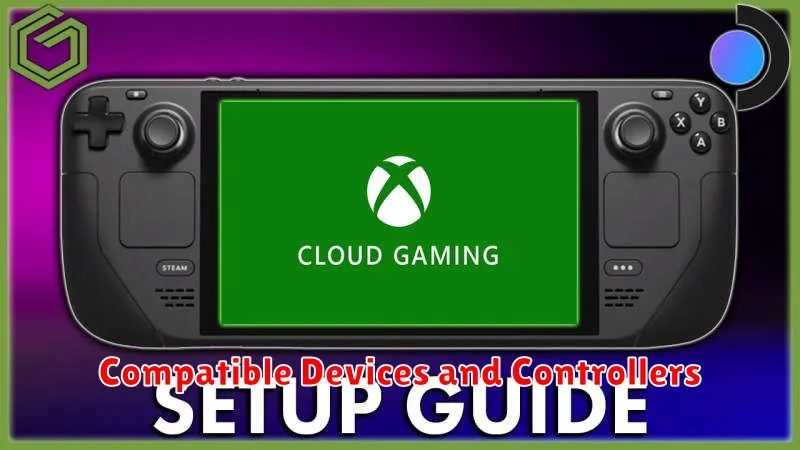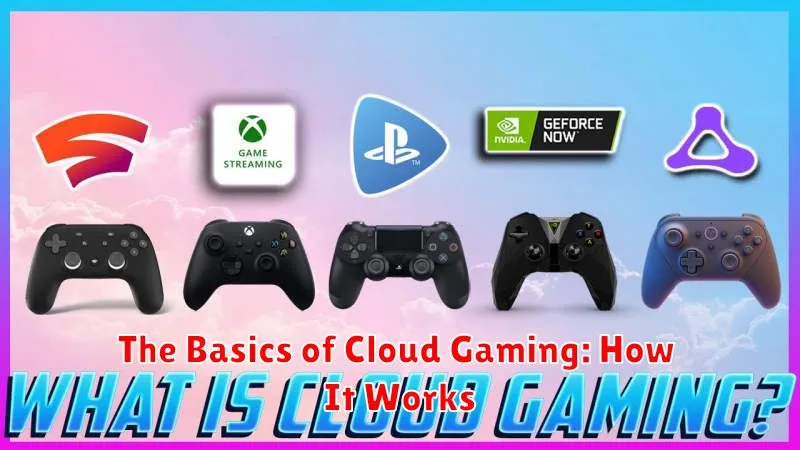Cloud gaming, also known as game streaming, is revolutionizing the way we experience video games. It eliminates the need for expensive hardware and downloads, allowing players to access and enjoy a vast library of games over the internet. From casual mobile gamers to hardcore PC enthusiasts, cloud gaming offers a flexible and accessible gaming experience. This innovative technology streams games from powerful servers directly to your devices, much like streaming movies or music. Learn the basics of cloud gaming and discover how this transformative technology is changing the gaming landscape.
This article will delve into the basics of cloud gaming, exploring how it works and the underlying technology that makes it possible. We’ll examine the benefits of cloud gaming, such as its accessibility, affordability, and the ability to play demanding games on virtually any device. We’ll also discuss the various cloud gaming services available and address common questions about latency, internet requirements, and the future of cloud gaming. Whether you’re a seasoned gamer or simply curious about this exciting technology, understanding the basics of cloud gaming is essential in today’s rapidly evolving digital entertainment world.
What Is Cloud Gaming?
Cloud gaming, also known as game streaming, is a technology that allows you to play video games without needing a powerful gaming console or PC. Instead, the game runs on remote servers in a data center, and the video output is streamed to your device, much like watching a movie on Netflix. You interact with the game through your controller, keyboard, or other input device, and your inputs are sent back to the server.
This eliminates the need for expensive hardware upgrades and lengthy downloads, making gaming more accessible. All the heavy lifting is done by the powerful servers, enabling you to play high-quality games even on low-powered devices like tablets, smartphones, or older laptops. You essentially rent the processing power and game access from a provider.
Top Cloud Gaming Platforms in 2025
Predicting the exact landscape of cloud gaming in 2025 is challenging, as the industry is constantly evolving. However, based on current trends and advancements, several platforms are likely to be key players. Established platforms like Xbox Cloud Gaming, Nvidia GeForce Now, and PlayStation Plus (with its cloud streaming component) are expected to remain strong contenders. These services offer a mix of subscription models and expansive game libraries.
Emerging platforms and enhanced services from companies like Amazon Luna and potentially even Google Stadia (should it relaunch or be rebranded) could also be prominent. These platforms may offer unique features and advantages to attract users. Ultimately, the “top” platform will depend on individual preferences for game selection, pricing, and performance.
Internet Speed Requirements
A stable and sufficiently fast internet connection is crucial for a smooth cloud gaming experience. Lag, stuttering, and input delay are common issues with inadequate internet speed.
Generally, a minimum download speed of 10 Mbps is recommended for a decent 720p resolution gaming experience. However, for optimal performance, especially at higher resolutions like 1080p or 4K, a download speed of 25 Mbps or higher is often necessary. Upload speed is less critical but still plays a role in multiplayer games; a minimum of 5 Mbps is generally sufficient.
Latency, or ping, also plays a vital role. A lower ping, ideally below 50ms, is crucial for a responsive gaming experience. High latency can result in noticeable input lag, significantly impacting gameplay, especially in fast-paced games.
Latency and Lag Management
Latency, the delay between a player’s action and the server’s response, is a crucial factor in cloud gaming. High latency results in noticeable lag, impacting gameplay responsiveness and overall enjoyment.
Cloud gaming providers employ various strategies to minimize latency. These include strategically locating data centers closer to users, optimizing network routes, and employing predictive algorithms to anticipate player actions. Lag management techniques also play a vital role, including input prediction and compensation methods to smooth out the effects of network inconsistencies.
Despite these efforts, latency can still be influenced by factors like internet connection speed, network congestion, and the player’s geographical distance from the server. These variables are important considerations for a seamless cloud gaming experience.
Compatible Devices and Controllers

Cloud gaming’s accessibility is a key strength. It supports a wide range of devices, eliminating the need for expensive hardware. You can typically play on computers (desktops and laptops), mobile devices (smartphones and tablets), and even smart TVs.
Controller support also varies. Many services allow you to use Bluetooth controllers, including those from popular consoles like Xbox and PlayStation. Some platforms also offer their own proprietary controllers or support keyboard and mouse input for a more traditional PC gaming experience.
Benefits vs Traditional Gaming
Cloud gaming offers several advantages over traditional gaming. Cost is a significant factor, as cloud gaming eliminates the need for expensive hardware upgrades. You can play demanding games on a variety of devices without owning a powerful PC or console.
Accessibility is another key benefit. Games become instantly available without lengthy downloads or installations. You can start playing almost immediately on compatible devices, wherever you have a stable internet connection.
Storage space is also less of a concern. Games reside on the cloud provider’s servers, freeing up valuable space on your local devices. This allows you to access a large library of games without worrying about storage limitations.
Subscription and Pricing Models
Cloud gaming services typically employ various subscription and pricing models. Subscription-based models are prevalent, offering access to a library of games for a recurring fee, often monthly. These can range from basic tiers with limited access to premium tiers with larger libraries, higher resolutions, and additional perks.
Usage-based pricing is another model, where users pay for the time they spend playing specific games. This can be beneficial for casual gamers who don’t play frequently. Some services also offer a hybrid model, combining a subscription with the option to purchase individual games not included in the subscription library.

